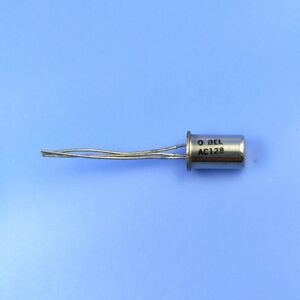

The gate needs excellent electrical insulation from the germanium channel to control the current flow through it without becoming an unintentional path for current leakage. The gate is a metal electrode that delivers a voltage to either encourage or discourage current flow (the ability to selectively allow or block current flow is what puts the “semi” in semiconductor). The first major step toward rehabilitating germanium’s reputation was to discover a sturdy and effective dielectric material for insulating the “gate” of a germanium transistor. Saraswat has sensed for years that germanium could save the day, and recently his group’s research has produced some compelling evidence. These problems have led to calls for new materials and designs for future transistors smaller than 20 nanometers long.

Meanwhile, the path the current is supposed to follow is becoming so narrow that not enough can get through. Layers of SiO 2 insulation within the devices are becoming so thin (less than two nanometers) that current leaks through like oil from a corroded Alaskan pipeline. At the scale of a few dozen nanometers in length, however, silicon’s performance is starting to break down. For decades, chip makers have consistently shrunk transistors to pack more on each chip, making each chip more powerful. That balance may now be tipping in germanium’s favor. Germanium is a much better conductor than silicon, but historically that virtue hasn’t overcome its vices. By contrast, germanium is rare and its native oxide, GeO, is thermally unstable and dissolves in mere water.

Passivation comes through a phenomenon in which the material ties up loose bonds on the surface of the semiconducting material that might otherwise trap electrons passing through, reducing the flow of electrical current (current is a flow of electrons). An oxide provides the electrical insulation in tightly packed integrated circuits and “passivates” the surface of the semiconducting material. Silicon has always been the practical choice because it is abundant (and therefore cheap) and because it has a workhorse in its native oxide, SiO 2. “The first transistor made by Brattain, Bardeen, and Shockley at Bell Labs was germanium and the first integrated circuit at Texas Instruments by Jack Kilby was also in germanium. “Germanium actually brought the microelectronics industry two Nobel prizes,” Saraswat says. Electrical engineering Professor Krishna Saraswat’s goal is to reinstate germanium among the vanguard of the movement to produce transistors at the scale of a dozen nanometers. How is the element germanium like the early Soviet leader Leon Trotsky or the storied Apple CEO Steve Jobs? It too ushered in a revolution-microelectronics-only to be cast aside. The Catalyst for Collaborative Solutions.Technology Transfer/Technology Licensing.Stanford Data Science & Computation Complex.Stanford Engineering Reunion Weekend 2022.Dean’s Graduate Student Advisory Council.Summer Opportunities in Engineering Research and Leadership (Summer First).Graduate school frequently asked questions.

Stanford Engineering Research Introductions (SERIS).Stanford Exposure to Research and Graduate Education (SERGE).Summer Undergraduate Research Fellowship (SURF).Additional Calculus for Engineers (ACE).Stanford Summer Engineering Academy (SSEA).About the Equity and Inclusion Initiatives.International Graduate Student Programming Board.


 0 kommentar(er)
0 kommentar(er)
